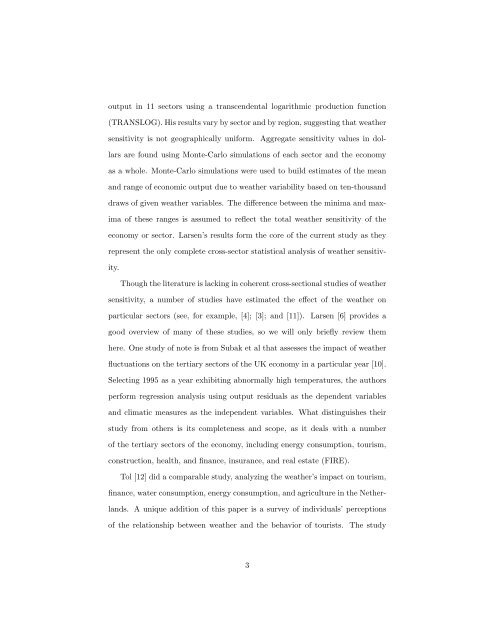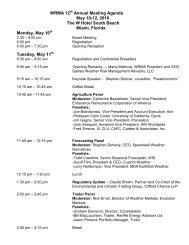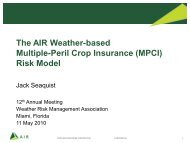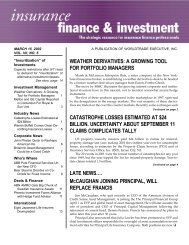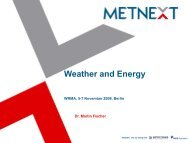Global Weather Sensitivity: A Comparative Study - albertotroccoli.org
Global Weather Sensitivity: A Comparative Study - albertotroccoli.org
Global Weather Sensitivity: A Comparative Study - albertotroccoli.org
- No tags were found...
You also want an ePaper? Increase the reach of your titles
YUMPU automatically turns print PDFs into web optimized ePapers that Google loves.
output in 11 sectors using a transcendental logarithmic production function<br />
(TRANSLOG). His results vary by sector and by region, suggesting that weather<br />
sensitivity is not geographically uniform. Aggregate sensitivity values in dollars<br />
are found using Monte-Carlo simulations of each sector and the economy<br />
as a whole. Monte-Carlo simulations were used to build estimates of the mean<br />
and range of economic output due to weather variability based on ten-thousand<br />
draws of given weather variables. The difference between the minima and maxima<br />
of these ranges is assumed to reflect the total weather sensitivity of the<br />
economy or sector. Larsen’s results form the core of the current study as they<br />
represent the only complete cross-sector statistical analysis of weather sensitivity.<br />
Though the literature is lacking in coherent cross-sectional studies of weather<br />
sensitivity, a number of studies have estimated the effect of the weather on<br />
particular sectors (see, for example, [4]; [3]; and [11]). Larsen [6] provides a<br />
good overview of many of these studies, so we will only briefly review them<br />
here. One study of note is from Subak et al that assesses the impact of weather<br />
fluctuations on the tertiary sectors of the UK economy in a particular year [10].<br />
Selecting 1995 as a year exhibiting abnormally high temperatures, the authors<br />
perform regression analysis using output residuals as the dependent variables<br />
and climatic measures as the independent variables. What distinguishes their<br />
study from others is its completeness and scope, as it deals with a number<br />
of the tertiary sectors of the economy, including energy consumption, tourism,<br />
construction, health, and finance, insurance, and real estate (FIRE).<br />
Tol [12] did a comparable study, analyzing the weather’s impact on tourism,<br />
finance, water consumption, energy consumption, and agriculture in the Netherlands.<br />
A unique addition of this paper is a survey of individuals’ perceptions<br />
of the relationship between weather and the behavior of tourists. The study<br />
3


